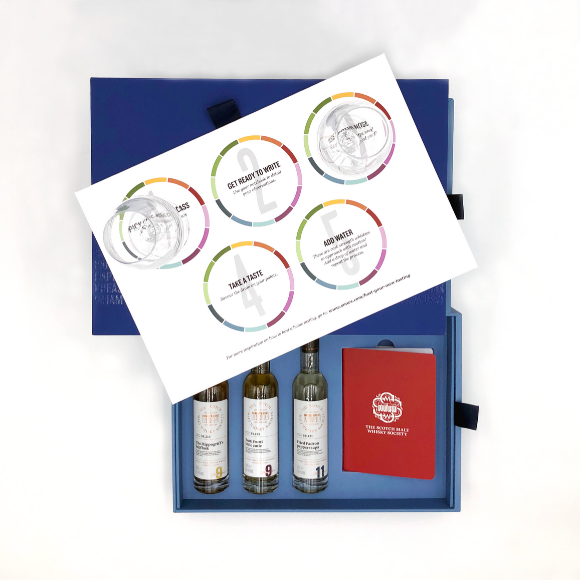Ardbeg
First Society bottling in 1986.
You only have to whisper the name - Ardbeg and a million tastebuds salivate while a thousand hearts miss a beat.
Which is perhaps why many more hearts stopped altogether when then owners Allied Domecq closed the distillery down in 1996. Was this the first and final death knell for the most beloved and worshipped distillery among the 150 or so to be found dotted around the world? For years it had played second fiddle to their superstar malt Laphroaig, and you could kind of understand why. Islay whisky, or at least that traditional pungent, peaty, smoky form of it, is an acquired taste for the public as a whole.
To put resources into the smaller distillery - even if the malt was arguably the better of the two - did not make sound commercial sense. There was a train of thought discussed in certain quarters in that company that Ardbeg should be simply left to die. One less Islay malt meant less possible competition for the excellent Laphroaig. But common sense prevailed.
It was sold and the thinking was that Allied would benefit on two fronts. The first was that they would receive much needed cash. And, secondly, another company would be able to pour millions into advertising and bringing public awareness to the uncompromising and natural beauty of Islay whisky. To that end new owners Glenmorangie do not appear to be stinting. The distillery is already back on stream and two new Ardbegs are on sale - even though in limited quantities due to the fact that there is so little of the stuff in their warehouses. Some years back I stood and watched a couple of banels of Ardbeg 1963 being loaded onto a lorry. They were destined to find anonymity in some blend or other.
Each time I visited, another building had vanished, bulldozed rather than restored and the warehouses were a little emptier. It was heart-breaking. Ardbeg for me makes the most beautifully balanced whisky on earth, something that cannot clearly be defined by word but only by sensation on the nose and palate. So as long as I live I will never forget the early hours of that warm July morning this year. Midnight had just passed and a full moon cast a silvery glow on the still waters that stretch from the distillery across to Ireland's County Antrim coast and Scotland's peninsula of Kintyre.
In the redundant maltings a baby barn owl called for its food while its mother hunted for some in the mash house. Then that glorious old pot still which had ironically benefited from years of disuse by being the last in Scotland with pre-war riveting to be used - forced the first spirit through the condensers into the spirit safe. Ardbeg was back in business. What happens now is up to tlle demand of the public.
The greater the interest in Ardbeg, the more Glenmorangie are likely to be inclined to bring Ardbeg back to old ways. It may be asking too much to see both the enormous maltings completely back in action so all the malt used in the making of the whisky comes from Ardbeg - as was the case before 1978.
Time has taken an enormous toll on those buildings and while they will be restored, making them again operational is another matter altogether. However, we can but hope. And if that means passing the word - and a glass of this extraordinary stuff - to help make this happen, then I for one am in for a busy few years.

